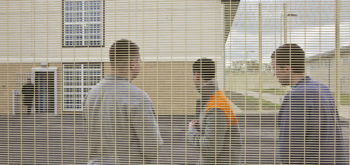This week members of our research team reported the initial findings of a study funded by the Nuffield Foundation that has for the first time, established a best estimate of the number of birth mothers and their children caught up in recurrent care proceedings. Here we refer to vulnerable birth mothers who have appeared once before the family court with one or more infants/children and then appear in a subsequent set of care proceedings, most commonly prompted by the birth of another infant. Although frontline professionals have reported long-standing concerns about the repeat clients of public law proceedings, prior to the study we report, the scale of the problem has been unknown.
Writing in Family Law (Broadhurst et al., 2014), we reported that vulnerable birth mothers who are ‘repeat clients’ of the Family Court are a sizeable population. Based on cases that completed during the observational window 2007-2013 (calendar years), more than 7000 birth mothers and almost 23,000 children appeared in recurrent care proceedings. Moreover, the study most likely underestimates recurrence, because reliable data concerning completed cases is not available before 2007. One of the most concerning findings from this initial population profiling exercise is that intervals between successive care proceedings are short which leaves birth mothers little time to make the changes that the court requires – thus it is not surprising that in 42% of cases, the court made an application at or close to an infant’s birth. It is difficult to see how birth mothers can exit a pattern of repeat care proceedings, if this pattern is not addressed. Work is ongoing to link fathers to these cases and to map the problem in respect of local authority and court areas.
Human costs
The response to our reporting of the research findings has been absolutely unprecedented – which suggests we are speaking to a topic that is highly concerning for many. The human costs of this cycle for mothers, their children, partners and extended family networks are stark, and in addition, these cases make exceptional demands on the courts.
However, this population of women test the limits of public sympathy and response to the Guardian article illustrate how the public is divided on this topic. Comments ranged from: ‘parents needs must be addressed to help them keep the next child, this is a tragedy’ to words to the effect of ‘give them a widescreen TV in exchange for sterilization’. Negative responses are perhaps not surprising – society would rather forget this population of women who we have previously described as ‘maternal outcasts’ (Broadhurst and Mason, 2013).
However, it is important to consider gaps in preventative services, in order to arrive at a fairer appraisal of this problem. A particular national concern, which has again been voiced anecdotally but is not systematically explored, is the local authority response to notification of pregnancy. Where a mother is deemed to be in need of support or a risk to her child, her case will often be referred to the local authority by health professionals when she is pregnant – in many cases mothers also self-refer and request help. However, all too often anecdotal reports are that help comes too late and when it does, this is weighted towards assessment rather than the provision of practical support and psychosocial therapy.
Local authorities are severely stretched, so we can appreciate why they would not prioritise an unborn child. In addition, there is considerable variation across England in terms of the pre-birth response, with some excellent examples of innovative practice reaping rewards (Salford Strengthening Families, Warrington and Garraway, 2014). However, this national shortfall in service provision must be tackled as an absolute priority. A joint health and children’s social care response is suggested which offers a holistic approach to the health and social care needs of mother and unborn child. Such a response must examine how informal networks can be mobilized at a timely point to support mother and infant.
In terms of the court process, it is absolutely imperative that when young mothers (and fathers) first appear before the family court, that the family court is attuned to the possibility of a next pregnancy. Support to access contraception is vital at this juncture, to enable birth mothers to space their pregnancies. In addition, young parents must be able to access the help that is recommended within care proceedings at a timely point. The Family Drug and Alcohol Court is delivering positive results in terms of effecting change with parents, whose histories might suggest otherwise (Harwin et al., 2014). A problem solving, highly skilled approach to parents in care proceedings is surely the way forward to reduce recurrence?
It is not just within care proceedings, that timely help must be assured, but also following the conclusion of care proceedings. Again, professionals operating in the family court claim that parents are unable to readily access help recommended by social workers and experts following the conclusion of care proceedings, because they are deemed to fall below the threshold for adult disability and mental health services. When parents no longer have custody of their children, they are not a priority for children’s services, so tend to fall off professionals’ radar, abandoned to their own fate. Again, innovative projects are bucking this trend such as Suffolk County Council’s ‘Positive Choices’ (Suffolk Children and Young People’s Service, 2010).
To date, the problem of recurrent public law proceedings has been rather side-stepped by policy makers – it may be that the needs of this group of vulnerable women overwhelm those in positions to effect change. In 2012, Pam Cox of Essex University referred to the problem of birth mothers in recurrent care proceedings as a problem with ‘no name’. However, it is timely to draw this population firmly into view. The age profile of birth mothers caught in this cycle suggests much scope for maturation with the right kind of help. However, it would also be naive to suggest that all women can be ‘fixed’. Where the prognosis for mothers is poor then what kind of adult protection response is suggested to stop a cycle of repeat pregnancy and removal? Such questions require urgent debate.
References
Broadhurst, K. and Mason, C. (2013). Maternal Outcasts: raising the profile of women who are vulnerable to successive, compulsory removal of their children – a plea for preventative action. The Journal of Social Welfare and Family Law, 35(3), 291-304. DOI:10.1080/09649069.2013.805061Broadhurst, K., Harwin, J., Shaw, M., Alrouh, B. (2014) Capturing the scale and Capturing the scale and pattern of recurrent care proceedings: initial observations form a feasibility study. Family Law
Cox, P. (2013) Cox, Pamela (2012) ‘Marginal mothers, reproductive autonomy and repeat losses to care’, Journal of Law and Society, 39:4, 541-561
Harwin, J, Alrouh, B, Ryan, M. & Tunnard, J. (May 2014) Changing Lifestyles, Keeping Children Safe: an evaluation of the first Family Drug and Alcohol Court (FDAC) in care proceedings. Brunel University. http://www.brunel.ac.uk/shssc/research/ccyr/research-projects/fdacSuffolk Children and Young People’s Service (CYPS) (2010). Support for birth mothers and fathers whose children are subject to permanency arrangements. Paper presented as the Tavistock Centre, 6th of June, 2014.
Warrington, W. & Garroway, J. (2014) Salford Strengthening Families Project: symposium paper, Tavistock Centre, 6th of June 2014.







